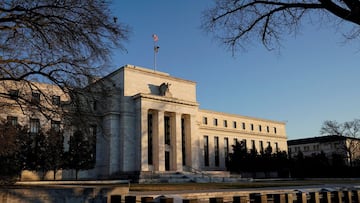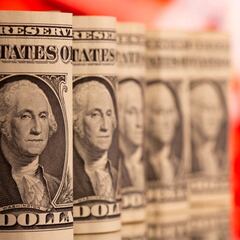Why did the Federal Reserve have a closed board meeting? What was discussed?
Federal Reserve board members met on Monday behind closed doors to discuss how aggressive rate hikes should be in coming months to combat inflation.

Comments last week by St Louis Fed President James Bullard raised market expectations of a large rate hike, possibly even before policymakers meet in March. US Federal Reserve officials remain split on how aggressive they should be on tackling high inflation which hit 7.5 percent year on year in January.
Members of the Fed are cautioning about moving too abruptly and aggressively and that it would be “preferable to go gradual." Bullard again on Monday reiterated calls for more aggressive action of raising interest rates a full percentage point by 1 July. But he did not mention an inter-meeting rate hike and after a closed-door meeting on Monday no emergency action was announced.
Also see:
- Evictions are on the rise as some states emergency rental assistance funds run dry
- Global financial markets hang on news from Ukraine
- The ins and outs of withdrawing from your 401(k) plan
- States sending residents extra money in 2022
The policy-setting Federal Open Market Committee to meet in March
Federal Reserve officials have made it clear that they are poised to begin lifting rates in March. The decision of how much will be taken at the two-day meeting of the Federal Open Market Committee next month. The next consumer inflation report, due on 10 March five days before they meet, will be a major factor in determining just how aggressive the policymakers need to be.
St. Louis Fed President James Bullard sits down with @steveliesman and @SquawkCNBC to discuss possible rate hikes amid rising inflation. “I do think we need to front-load more of our planned removal of accommodation than we would have previously.” https://t.co/5I22AJTzF3 pic.twitter.com/OX824pb9hR
— CNBC (@CNBC) February 14, 2022
The US has seen the last four reports showing strong inflation which has led Bullard to urge a 50 basis point increase in March. That would be followed by additional two more rate hikes in May and June, when the policy-setters will meet again, to reach his goal, a total of 100 basis points by July.
As one of the four rotating regional Fed presidents with voting rights he will have an active say in what the Fed decides at the meeting, although some of his peers have a different view of how much and how fast. Bullard told CNBC on Monday that the central bank’s "credibility is on the line," in tackling the 40-year-high inflation.
.@MaryDalyEcon tells @margbrennan that interest rates are only one part of the inflation puzzle -- the others are getting supply chain issues resolved and getting consumers spending on both goods and services. pic.twitter.com/Yfv9ZWIPh6
— Face The Nation (@FaceTheNation) February 13, 2022
Other Fed presidents prefer gradual approach
San Francisco Fed President Mary Daly is preaching more caution "watching, measuring, being very careful about what we see ahead of us,” she told CBS' "Face The Nation" in an interview on Sunday. The need to increase rates is not in question “I see that it is obvious that we need to pull some of the accommodation out of the economy,” she said.
Related stories
As for further increases those could come “when it seems the best place to do that. And that could be the next meeting or it could be a meeting away." Adding “history tells us with Fed policy that abrupt and aggressive action can actually have a destabilizing effect on the very growth and price stability that we're trying to achieve."
The Federal Reserve should weigh asset sales to curb inflation, says Kansas City Fed President Esther George https://t.co/zK1kelYpv5
— WSJ Markets (@WSJmarkets) February 14, 2022
Weighing just how much to raise rates in light of all the curveballs the covid-19 pandemic has thrown Kansas City Fed President Esther George said in an interview with the Wall Street Journal “I’d be hard-pressed to say we have got to get to neutral really fast,” which would mean that larger and more frequent rate increases are needed right now. “It is always preferable to go gradual."


